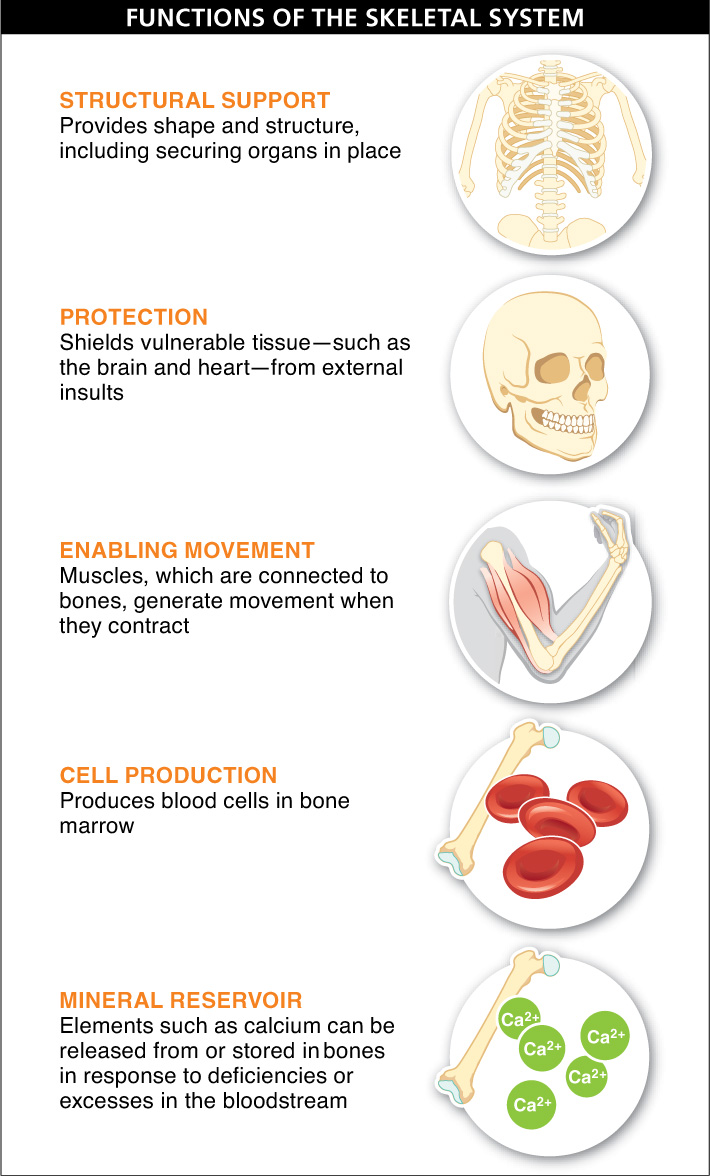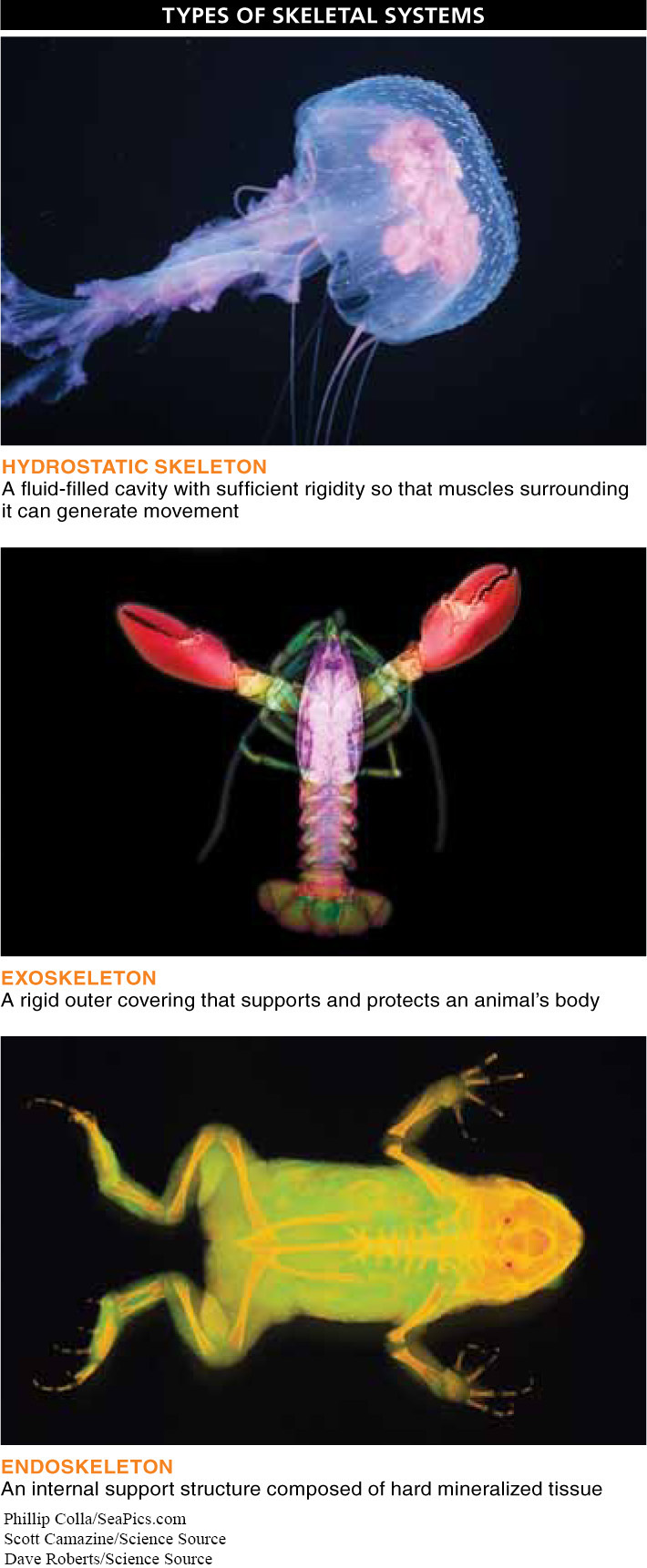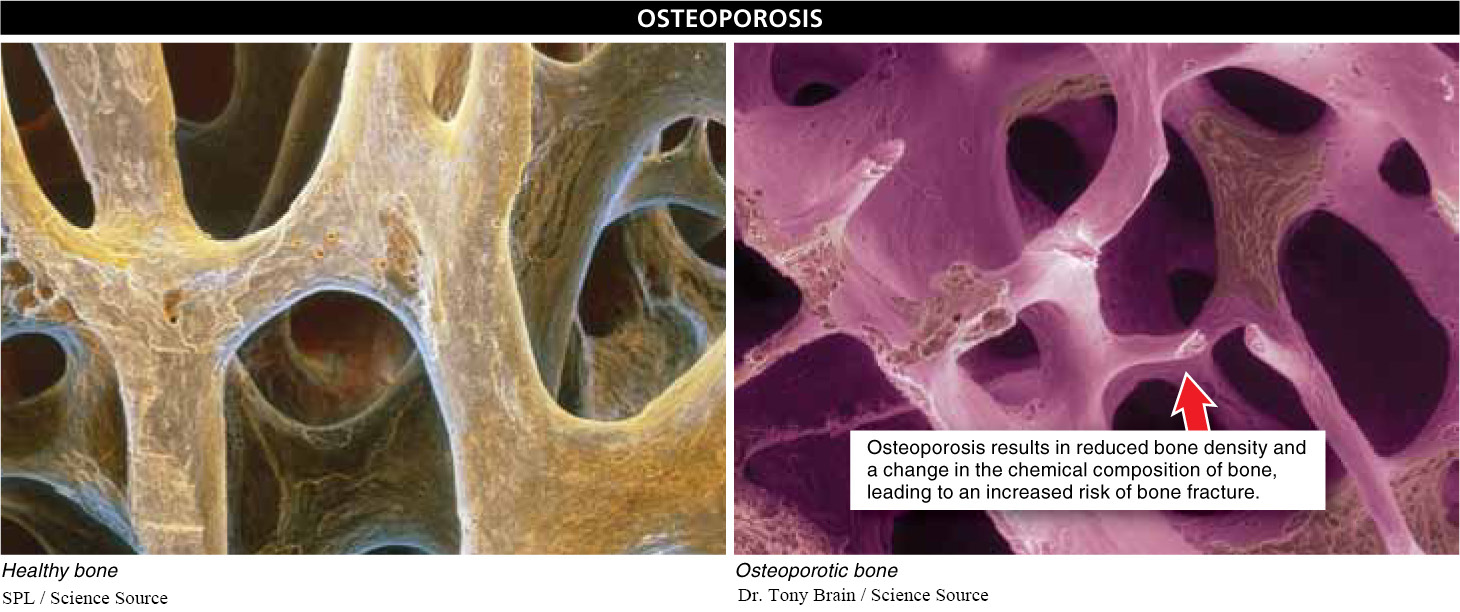By serving as a structural frame, the skeletal system interacts with the muscular system to enable movement. But this is just one of many important functions of a skeleton (FIGURE 23-36). A skeletal system can also provide support for the organism, affording shape and structure and a means of securing the organs and other structures within the animal’s body. And in addition to enabling movement and providing support, a skeletal system offers protection—


947
There are three distinct types of skeletal systems (FIGURE 23-37). In a hydrostatic skeleton—such as is found in earthworms, jellyfish, and squid—
The composition of the endoskeleton differs between echinoderms and vertebrates, and among the vertebrates. Echinoderm endoskeletons consist of a rigid, calcium-
What is osteoarthritis? Why is it so painful?
At the locations in the vertebrate skeleton where bones meet, several types of joints occur. These may allow movement while maintaining support, such as in the shoulder, hip, knee, and elbow joints. Or they may enable little movement (such as the joints between vertebrae) or no movement at all (such as the “joints” that are the sutured connections between the bones of the skull). Arthritis is a condition in which joints have become damaged. There are different forms of arthritis. In the most common type, osteoarthritis, a breakdown of connective tissue, usually cartilage, reduces the cushioning of the bones and can lead to inflammation of tissue around the joint, and accompanying pain.

Another type of breakdown in the skeletal system is osteoporosis, a disease that occurs as the density of bone is reduced and the chemical composition of the bones changes (FIGURE 23-38). Occurring most commonly in women, particularly following menopause, osteoporosis increases the risk of bone fractures and falls. Dietary modifications, including increased intake of calcium and vitamin D that can strengthen bones, along with lifestyle changes such as increased exercise that can build bone mass and strengthen muscles, can reduce osteoporosis and the risks associated with it.
TAKE-HOME MESSAGE 23.16
Among animals, three distinct types of skeletal systems occur: hydrostatic skeletons, exoskeletons, and endoskeletons. The vertebrate skeletal system, an endoskeleton, can enable movement, provide support, offer protection, provide a site for production of important blood and immune cells, and serve as a reservoir of minerals, including calcium.
Briefly describe the three different types of skeletons described in this chapter.
In a hydrostatic skeleton, such as that found in an earthworm or jellyfish, pressure created within a fluid-filled cavity creates enough rigidity that muscles surrounding it can generate movement. An exoskeleton, such as that found in an insect or mollusk, is a rigid outer covering that surrounds and protects the animal's body. An endoskeleton consists of a rigid internal support system composed of hard, mineralized tissues. Endoskeletons are found in vertebrates as well as in echinoderms, such as sea stars.
948